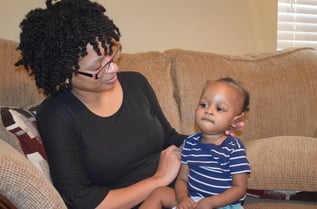This panel of 114 genes is intended for patients with a diagnosis or clinical suspicion of X-Linked Intellectual Disability (XLID) and is performed by Next Generation Sequencing (NGS). This molecular test is also used to identify the disease causing mutations within a family to allow for carrier testing and prenatal diagnosis.
8 weeks
81470
$3,500
Intellectual disability (ID) is characterized by significant limitations in cognitive abilities and social/behavioral adaptive skills. It is estimated that 1-3% of the general population is affected with ID. Intellectual disability is one of the primary reasons for pediatric, neurologic, and genetic referrals. Intellectual disability can result from both environmental circumstances and genetic causes. Genetic causes, which account for up to 50% of moderate-severe cases, include chromosomal anomalies, specific syndromes, and single gene disorders. Approximately 10% of the protein-encoding genes on the X chromosome have been implicated in XLID. Although the numbers of mutations and reported families are small, collectively the impact of these genes is significant. This panel includes analysis of 114 X-linked genes that are known to be involved in syndromal and nonsyndromal intellectual disability. A majority of individuals with XLID are non-syndromal with no other features to assist in the diagnosis. Because of the number of genes involved, it is very difficult to identify which X-linked gene may be responsible for the phenotype in any given patient. Our simultaneous testing of all known XLID genes in a single study provides a significant diagnostic advantage over single gene sequencing.
Males with intellectual disability (ID) who have normal chromosomes, microarray, and fragile X results and X-linked pattern family history. Males with ID in the presence or absence of other dysmorphic, neuromuscular, metabolic or behavioral phenotypes that distinguish the proband from unaffected males in the family. Females with a family history suggestive of an X-linked disorder and suspected to be carriers when no living males with ID are available to test.
Next Generation Sequencing
The current design of the XLID panel covers approximately 10% of coding genes found on the X chromosome. At present, genes that do no encode a protein product are not included in the panel. As new genes are implicated in XLID, updates will be made to the existing assay. All novel and apparently pathogenic changes are reported when found within the coding region as well as within 25 basepairs of each intron/exon boundary for each gene. Promoter and 3 untranslated sequences are not included in the current analysis. It should be noted that the current protocol is not specifically designed to detect copy number alterations, but deletions in males should be readily apparent based on lack of amplification and sequence detection. Single exon deletions may require additional follow-up to determine whether or not they represent technical artifacts. We recommend further array-based testing to more accurately address the concerns of dosage alterations. The Cytogenetic Laboratory at GGC provides high resolution testing for both X chromosome and whole genome applications. The GGC Diagnostic Laboratory Directors are available for further consultation regarding the limitations of the NGS and array testing procedures.
The preferred sample type is 3-5 ml of peripheral blood collected in an EDTA (purple top) tube. Extracted DNA and saliva are also accepted for this test. Saliva samples must be submitted in an approved saliva kit. Contact the lab to receive a saliva kit or to have one sent to your patient.
The specimen should be kept at room temperature and delivered via overnight shipping. If shipment is delayed by one or two days, the specimen should be refrigerated and shipped at room temperature. Do not freeze the specimen. Samples collected on Friday can be safely designated for Monday delivery.
If the pathogenic mutation(s) are identified in an affected individual using this panel, prenatal diagnosis is available for future pregnancies. Sanger sequencing will be used for prenatal diagnosis when there is a known familial mutation. Additional fees for cell culture and maternal cell contamination may apply. Maternal cell contamination studies are required for all prenatal molecular tests. Contact the laboratory prior to sending a prenatal specimen.
Call our laboratory at 1-800-473-9411 or contact one of our Laboratory Genetic Counselors for assistance.
Robin Fletcher, MS, CGC
Falecia Thomas, MS, CGC
Alex Finley, MS, CGC
